Key trends
- The climate is warming. Since the 1800s, the climate has warmed globally by approximately one degree and in Finland by about two degrees. Warming will continue, but its extent will be affected by the actions taken now. In the best-case scenario, warming can be kept to 1.5 degrees Celsius globally, but only if a rapid reduction in global greenhouse gas emissions is achieved. At the current rate, the climate would warm by between 3 and 4 degrees within this century. This would lead to a climate change feedback loop, resulting in crises such as famine, mass migration, the mass extinction of species, coastal flooding and many regions becoming uninhabitable.
- Extreme weather phenomena will become more common. Climate change leads to an increase in extreme weather phenomena. Floods and droughts will become more common, as will increasingly intense storms. The variability of weather conditions will create pressure on agriculture and infrastructure in particular.
- Decreasing biodiversity. We are in the midst of a mass extinction of plants and animals caused by human activity. A million species will be threatened with extinction within the next few decades unless the situation rapidly improves through a reduction in the consumption of natural resources, a slowing down of population growth and the expansion of protected areas. The deterioration of the state of the environment threatens the well-being of hundreds of millions of people and will also cause annual economic losses measured in hundreds of billionsS. dollars.
- Excessive consumption and varying availability of resources. Growing consumption means that many resources will become more and more scarce or the cost of acquiring them will increase. Challenges may arise with respect to the availability of critical materials for industry. Sand suitable for construction is also at risk of running out, as is fresh water in many regions. There is a growing need to increase the use of alternative materials as well as the circulation of materials.
- Soil degradation. At the current rate, 90 per cent of the world’s soil will be degraded by 2050 and there is a risk that the world will run out of fertile soil in 60 years. Climate change makes the situation worse by increasing extreme weather conditions. Preventing erosion and sequestering carbon dioxide in the soil can increase food security while also mitigating climate change.
- Increase in the amount of waste. Approximately 0.7 kilograms of waste per person is created around the world each day. In Finland, this figure is 1.4 kilograms. The amount of waste is predicted to increase by 75 per cent globally by 2050. Circular economy solutions can significantly reduce the amount of waste.
The ecological sustainability crisis, which refers to climate change, the sixth mass extinction, excessive consumption and varying availability of resources, and waste-related problems, may significantly change our operating environment. Responding to the sustainability crisis requires changes in culture and practices. Solutions already exist, and what is needed now is quick action by all of the countries of the world. Finland has the opportunity to be a pioneer whose solutions offer significant global emission-reduction potential, for example. At the same time, it is possible to build the sustainable society of the future.
The ecological sustainability crisis – which refers to the deterioration of the environment and exceeding Earth’s carrying capacity – has been warned about for a long time. Climate change has been a subject of interest among researchers for several decades and has been on policymakers’ agendas for quite some time. In particular after autumn 2018, following the widespread attention received by the IPCC (Intergovernmental Panel on Climate Change) report, climate change has been the subject of extensive and continuous discussion in Finnish society and increasingly factored into the choices made in daily life by many Finns.
While climate change is one of the most significant changes taking place in our environment, it is certainly not the only one. In recent times, increasing attention has been given to the decline in biodiversity. Climate change and human activity have led to the accelerating extinction of many species of plants and animals, known as the sixth mass extinction. There are also many other environment-related challenges ahead, such as a shortage of sand suitable for construction, the poor availability of drinking water, environmental pollution, a growing waste problem and soil degradation.
While some action has already been taken, the past few years have made it increasingly clear that faster and more expansive measures are needed. Ambitions have grown with regard to the targets that are being set, but the same cannot be said for the practical measures taken. The ecological sustainability crisis is not only an issue for the future. It is already here today. Since the 1800s, the climate has warmed globally by approximately one degree and in Finland by about two degrees. The rate of extinction has increased. This shows that the sustainability crisis is not about changes that will happen at some point in the future. It is about changes that are already under way and will continue far into the future. Attention must be paid not only to mitigating climate change but also to adapting to its impact.
The warming of the climate will continue, but the extent will be affected by the actions taken now. In the best-case scenario, warming can be kept to 1.5 degrees Celsius globally, but only if a rapid reduction in global greenhouse gas emissions is achieved. Unfortunately, emissions are still increasing, and, at the current rate, the climate will warm by between 3 and 4 degrees within this century. This would lead to a climate change feedback loop caused by the warming process feeding itself through the collapse of glaciers and the melting of permafrost, among other things. At that stage, it would be impossible to mitigate the warming of the climate through human action. This would also result in mass migration, famine, the accelerating mass extinction of species, coastal flooding and some of the world’s regions becoming uninhabitable.
One of the chapter titles in Sitra’s 2016 megatrends report was “Sustainability crisis now” and, this time around, the same sentiment could be phrased as “a fair transition to a sustainable society needs to happen now”. We can no longer completely prevent the changes from happening, but we can influence their magnitude. A world that is 1.5 degrees warmer is different from a world that is 2 degrees warmer, not to mention one that is 2.5 or 3 degrees warmer. The more we can preserve various ecosystems and save species from extinction, the more resilient and sustainable our living environment will be.
Researchers are in unanimous agreement about the changes that are taking place, and several solutions already exist. Indeed, climate change, declining biodiversity and other environmental challenges are now particularly problems of collective action: how can we work together to achieve a fair transition to a more sustainable society?
The changing environment challenges culture to change
The impacts of the ecological sustainability crisis are seen in various ways: what kind of environment will we live in, what will be our attitude towards the changes and what will we decide to do about them? Extreme weather phenomena such as flooding, droughts and heat waves will become increasingly common, while winters will be characterised by more rain and less snow. The warming climate will also see many non-native species spread north, including Finland. The varying availability and shortage of resources will affect the prices of materials and, as a result, products.
Awareness of changes in the environment has already grown and it will increase further as the impacts become more visible. Emotions are also closely related to the sustainability crisis. There has been a lot of talk about climate anxiety, but a survey commissioned by Sitra in 2019 revealed that climate change also involves many other emotions. The respondents cited interest as the strongest emotion related to climate change. Other frequently mentioned emotions were frustration, a sense of inadequacy, powerlessness and hope. For different people, different emotions motivate them to take action and seek more information. With regard to the future, it might be better to use the term “climate emotions” or, more broadly, “environmental emotions”.
The increase in environmental awareness has been accompanied by a polarisation of views. According to a survey commissioned by the newspaper Helsingin Sanomat in 2019, nearly half of Finns suspect that concerns about the climate are exaggerated, while the other half is supportive of Finland taking a leading role in climate issues and is prepared to compromise on their standard of living. The 2019 Climate Barometer indicates that more and more people have in fact changed their habits and support prompt action. A growing number of people are participating in climate marches but, at the same time, air travel is increasing and the idea of adopting a more climate-friendly diet is met with strong emotional responses.
Abandoning old habits is daunting, especially in the absence of a clear understanding of what is to come. The feeling of having to give something up can also be perceived as pressure, particularly by those who do not believe in the justification for it. There is also an underlying broader change in values and paradigms. The trends challenge the view of nature as an infinite resource and man as its master. In its place is offered posthumanism, which sees man as only one part of nature and nature as having intrinsic value instead of being a resource to be utilised. As values change, the need to discuss desirable futures is emphasised, along with what sustainable lifestyles could look like in practice.
According to theSitra’s report 1.5-degree lifestyles, the carbon footprint of the average Finn is approximately 10 tonnes of carbon dioxide equivalent (tCO2e). Achieving climate targets would require this carbon footprint to amount to 2.5 tonnes in 2030 and only 0.7 tonnes in 2050. This means that significant lifestyle changes are needed before the climate targets are accomplished. This is not only a question of adaptation; fairly implemented, these changes will also mean healthier and happier lives as well as increased well-being. In practice, the solutions include the increased use of public transport and bicycles, shifting to renewable energy sources, adopting plant-heavy diets and transitioning to a circular economy in a broader sense. The change in lifestyles is affected by not only individual choices but also the availability of solutions to suit each individual, society’s support for those solutions and the general atmosphere in terms of attitudes.
Of course, mitigating climate change and taking other forms of environmental action are not solely the responsibility of the individual. Responding to the ecological sustainability crisis requires quick and significant changes. The BIOS Research Unit talks about ecological reconstruction, which involves rethinking structures and practices related to energy production, construction and transport, among other things. Trends that are desirable with respect to the transition to a sustainable society are happening, but not even close to the extent that is needed. The amount of renewable energy has increased, but not at a rate that is fast enough to achieve climate targets. Instead, the increase in renewable energy only covers the global growth in energy consumption. In construction, environmental priorities may usher in a shift towards renovation and wood construction. Transport emissions can be reduced by electrification, for example, which is becoming mainstream much faster than anticipated. Legislation, such as international regulation and co-operation, can support the transition towards a more sustainable society. However, significant changes have not yet occurred in that respect.
The climate will regardless become warmer in the decades to come, so focusing on adaptation is also important. Ideally, adaptation is well in line with mitigation. The adaptation to extreme weather, such as heavy rainfall, can include the increased use of green spaces and green roofs in cities, for example. They also help balance heat and, at their best, they can serve as new habitats for animals.
The ecological sustainability crisis also requires adaptation in agriculture. The warming of the climate contributes to soil degradation, while extreme weather and invasive species have negative impacts. In practice, responding to these challenges can involve more diverse cultivation, new crops and “carbon farming”, which refers to the sequestration of carbon in soil.
Tensions
- Environmental awareness vs environmental action. Environmental awareness among people has increased, but its impact is not yet sufficiently reflected in corresponding actions. It is possible that a growing number of people will change their habits, but it is also possible that scepticism towards changes in the environment will increase. The tension between awareness and action may also lead to deeper polarisation between those who demand action and those who belittle it. The best way to prevent this polarisation is collective discussion and co-operation aimed at achieving fair and socially acceptable change in society.
- Belittling vs activism. Climate marches and movements calling for radical environmental action, such as the global Extinction Rebellion movement, are gathering growing support. This development coexists with increasingly loud voices making belittling statements that reject the significance of individual choices – or even of Finland’s ability as a nation as a whole – being able to solve global problems. Nevertheless, there are more and more signs that activism has led to decisions that are better for the environment, at least as far as target setting goes. It is also possible that the division between belittlers and activists will grow further.
- Seeing nature as a resource vs having intrinsic value. Nature is still often seen as a resource that we, as humankind, are free to use as we wish. The opposite view is that we are part of nature, just as the other forms of life on Earth are, and we should act in a way that leaves space for others.
- Finland vs the rest of the world. In purely quantitative terms, Finland is a small player when it comes to climate emissions and other environmental impacts, but our impact per capita is considerable. Sceptics believe that what we do in Finland is of no significance, whereas others emphasise Finland’s role as a country that can create solutions and set an example. As wealthy industrial countries generate the majority of the world’s emissions, they bear a relatively large amount of responsibility, but they are also in the best position to reduce emissions in a manner that is fair from their citizens’ perspective. At their best, environmental actions also help create a society that is resilient with regard to exceptional circumstances, such as disruptions in the distribution of electricity or food.
- A fair or unequal transition to a sustainable society. Responding to the ecological sustainability crisis requires significant changes to society’s structures and practices. How large are the changes that can be achieved, and how fast can they be put into action? How will we ensure that the transition to a sustainable society is equal and fair?
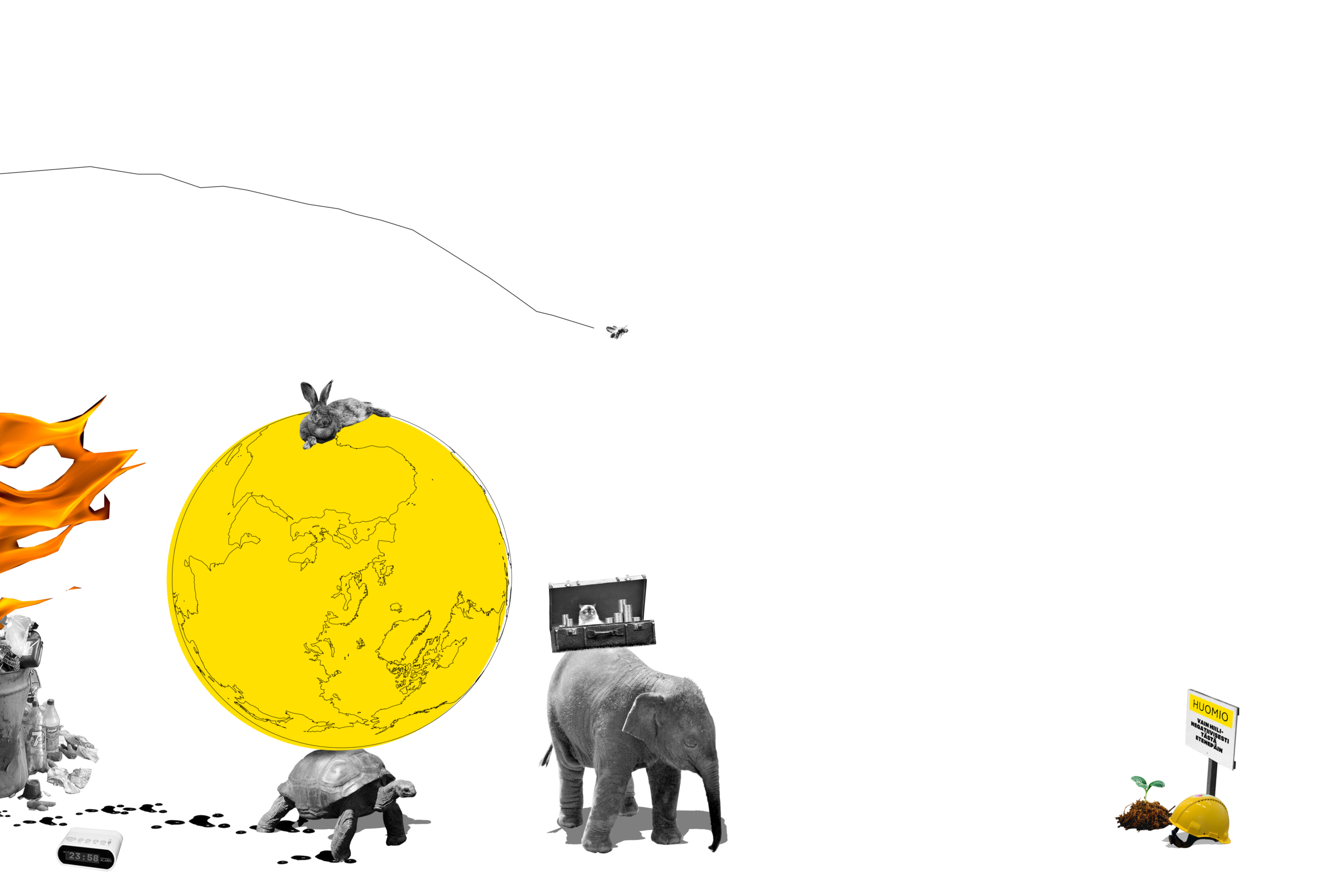






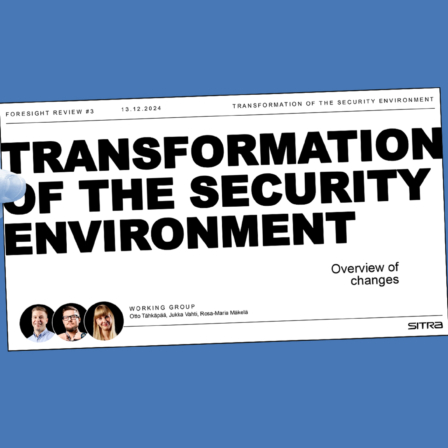

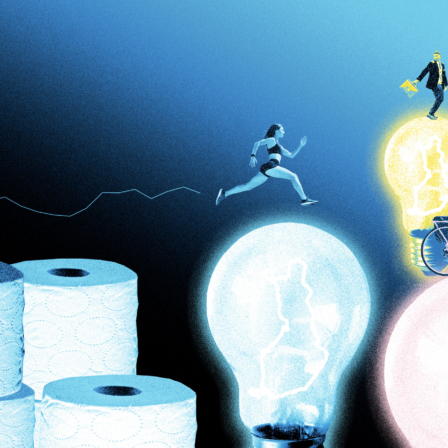

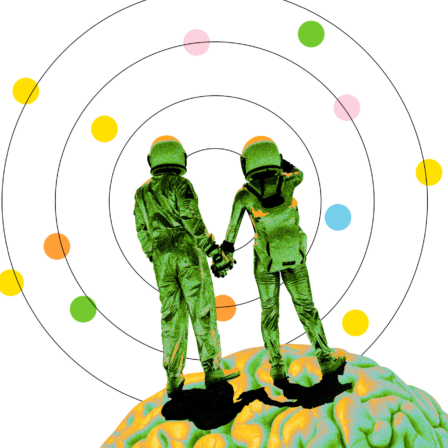

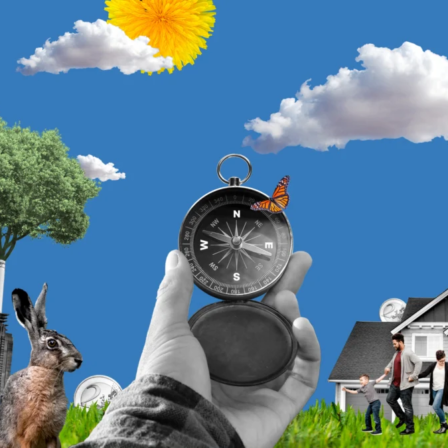
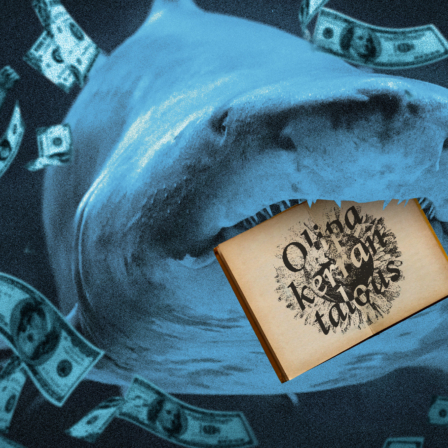
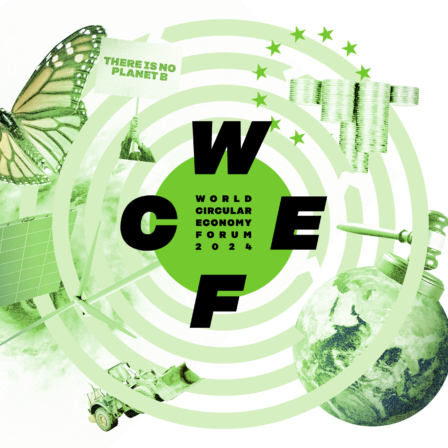
Recommended
Have some more.